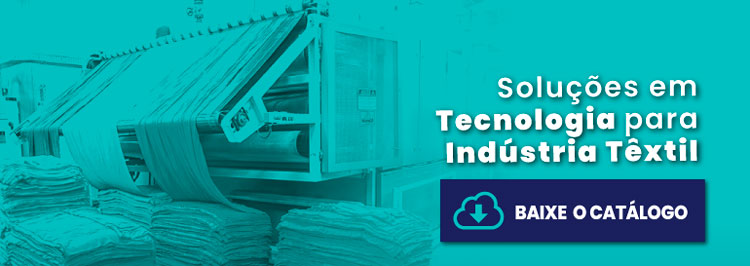Despite being seen as a good investment and providing an increase in the quality of products and the production process itself, purchasing textile machinery is a task that requires planning, as well as internal analysis and organization to avoid losses.
However, many companies ignore this fact and end up making mistakes when purchasing their machinery.
To prevent you from having this problem, we have separated the 5 most common mistakes. Check out what they are and prevent them from turning your investment into complications!
1. Not taking into account the company’s production model when purchasing textile machinery
Before making the purchase, you need to check whether the equipment is suitable for your company’s production model. In some cases, clothing manufacturers do not pay attention to this point and end up needing to adapt or adapt new machinery.
As a result, the value that had already been planned for the investment ends up increasing and the Return on Investment (ROI) decreases.
2. Not carrying out prior planning
Another very common mistake is not carrying out good planning and checking the impacts of that equipment on the company’s current production process. As a result, cases of underused equipment due to inappropriate purchase are common.
It is important that the investment is made to resolve a production bottleneck, otherwise the excess production achieved will not be able to be adequately processed during the other stages.

Furthermore, a lack of planning can result in problems such as difficulties during transportation or installation of the equipment — such as when the equipment does not fit through the warehouse door or does not have enough space for proper use.
When equipment is purchased impulsively, without due planning, these and other errors can occur, when they could have been avoided or, in some cases, already taken into consideration so that they did not become a loss.
3. Not researching equipment references
Before purchasing the equipment, it is essential to look for information such as technical specificities, production capacity, as well as references from other companies. To do this, it is possible to seek technical information from the supplier to help with the choice.
This way you can make the purchase with much less chance of it causing any type of loss or problem to your company, in addition to checking whether the equipment can meet the needs of your production process.
4. Believing that there is no need to innovate
Sometimes, industries choose to purchase equipment they already use, stating that they do not wish to change or optimize the production process.
The problem is that companies in the textile sector cannot survive if they do not adapt, since the market is more competitive and companies that provide better and innovative products stand out.
Furthermore, by investing in innovative equipment it is possible to optimize processes, increasing productivity and profits, as occurs when a clothing factory implements an automated knit relaxer.
Automation makes the service that used to be manual and lasted up to 48 hours, be carried out in minutes and using much less space.
As a result, the return on this investment and the reduction in expenses it provides end up becoming a huge advantage for the company.
The same occurs with several other steps that, when automated, provide faster production of parts, with fewer failures during the production process, which tends to generate more profit.
5. Acquiring modern equipment, but not training employees
Another action that should be included on the list of mistakes when purchasing textile machinery is believing that, because the equipment is modern and technological, any employee in the area who already has some experience can adapt to its use.
In fact, to ensure that equipment handling and fabric production are carried out efficiently, training is required. In addition to internal improvements, the ideal is to invest in courses and training.
Many of them already have modules aimed at automating the textile industry and contribute to the training of professionals prepared to deal with the advances of Industry 4.0.
Although it is still arriving in Brazil, adapting to the changes it drives is a way of remaining competitive, while optimizing the management and production of parts.

Data collection, as well as improved quality control and process automation, are benefits that can make all the difference, increasing the production capacity of the clothing industry, in addition to the quality of the products, resulting in more sales and profits.
As you have seen, with organized planning and attention to detail, it is possible to avoid these errors when purchasing textile machinery and thus enjoy the benefits that modern and efficient machinery provides.
If you are thinking about purchasing new equipment and are interested in the topic, also check out the article in which we talk about what to consider when choosing new machinery for the industry!


![E-book]How to ensure quality control in the textile industry?](https://deltamaquinastexteis.com.br/wp-content/uploads/2019/04/ebook-como-garantir-o-controle-de-qualidade-na-industria-textil-1.jpg)

